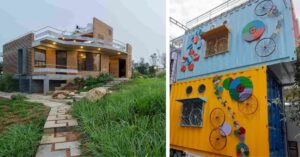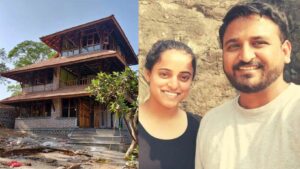Traditional Craftsmen Restore Centuries Old Monuments in Delhi’s Nizamuddin Basti
The Hazrat Nizamuddin Basti in Delhi is home to many monuments that have been damaged over the years due to various reasons. These buildings are now being restored using a traditional craft-based approach.
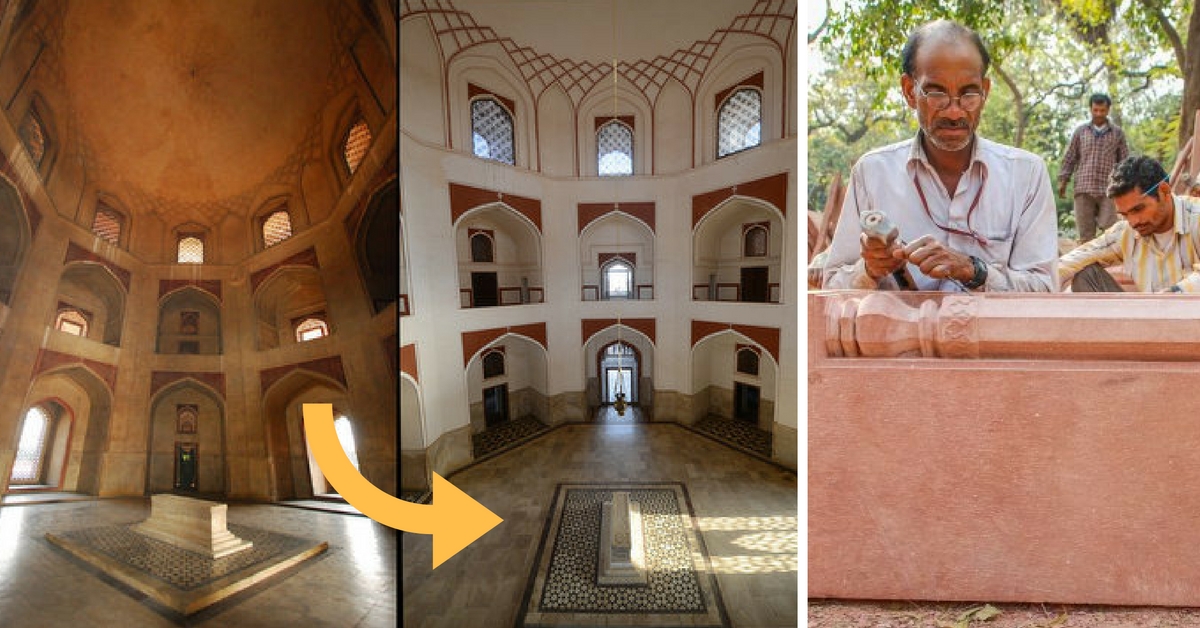
The Hazrat Nizamuddin Basti in Delhi is home to many monuments that have been damaged over the years due to various reasons. These buildings are now being restored using a traditional craft-based approach.
Hazrat Nizamuddin Auliya, was buried in the Nizamuddin area in the 14th century. Since it is considered auspicious to be buried near a saint’s tomb, many other tombs came up in the locality over hundreds of years, making this part of Delhi, rich in the architecture of medieval Islamic buildings.
One of the many tombs in this area is Humayun’s Tomb, the first garden tomb in the Indian sub-continent, which was declared a World Heritage site in 1993.

Photo credit: C Ram Rehman
In 1997, the gardens of the Humayun’s Tomb were restored by the Aga Khan Development Network with permission from the Indian government. After the successful completion of this project, in 2007, this foundation associated itself with the Archaeological Survey of India, the Municipal Corporation of Delhi and the Central Public Works Department, and has embarked on an urban renewal initiative in the historic Nizamuddin area. Many projects have been completed since then and some are still in progress.
“Through this initiative we have managed to complete the conservation work in over 30 monuments in this area. We are working towards creating a 100 acre city park with sensitive landscaping in the Sunder Nursery-Batashewala Complex, which is almost done. We are also working towards making significant improvements in the lives of the residents of this seven century old basti,” says Ms Archana Saad Akhtar, Senior Program Officer, Design and Outreach, of the Aga Khan Development Network.
The monument conservation project aims to demonstrate the need for a traditional craft-based approach to conserve India’s monumental buildings.
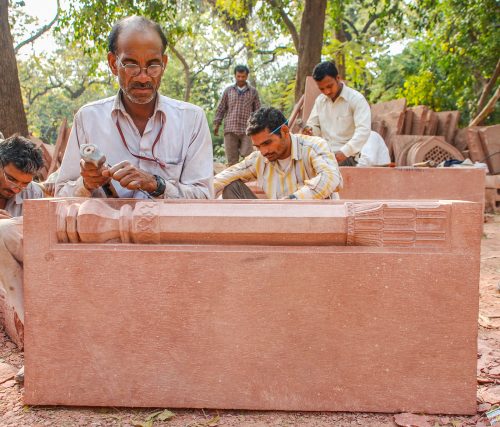
Photo credit: AKDN Archives
Conservation works in the Nizamuddin area have helped revive traditional crafts and age old craft skills. Hence, stone carvers, masons, plasterers, glazed tile makers, brick layers, art conservators, and carpenters work alongside architects and engineers. The architects and engineers do not take any decisions on the restoration work without taking inputs from all the craftsmen, who are extremely skilled in their particular fields. These craftsmen are encouraged to match the work of their forefathers using traditional tools, building traditions and materials.
“At the onset of the project, it became clear that in the recent past, particularly in the 20th century, repair works were carried out on many of these monuments using inappropriate materials like cement. These had to be removed and replaced with traditional building materials that were originally used – like lime plaster,” says Dhani Ram from Rajasthan, who is a master craftsman working mainly with the Delhi quartzite stone.
The use of traditional building materials and original craft skills has helped to restore the historic character and architectural integrity of these monuments.
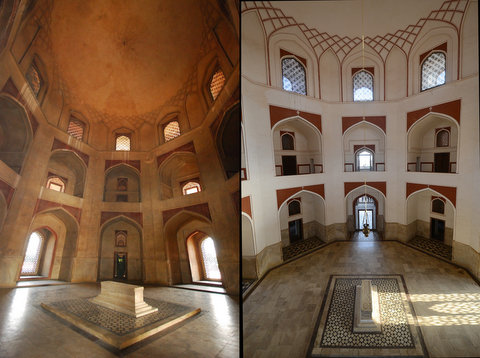
Photo credit: AKDN archives
Attar Singh has been working with Dholpuri stone for almost 35 years now. He says, “In our hometown we would work with this particular stone, which is used for many modern buildings these days. The designs carved by us were repetitive and very basic. Ever since we became involved in restoring these age old monuments, our craft skills have been challenged and we have had to use our brains and hands well, to match up to our ancestors who used such intricate designs in these monuments.”
The restoration of the tile work on the canopies on the roof of Humayun’s Tomb was one of the many interesting challenges in this project. The ancient tiles were studied in detail and it was found that no Indian craftsman had the expertise to make these tiles with the specific glaze that was used centuries ago. A hunt across the world resulted in the conservationists being led to tile professionals in Uzbekistan who were then brought to India. These craftsmen trained some of the youth in the basti to make the tiles and glaze them too. The outcome of this incident was that many young people in the basti learnt new techniques, which have provided them with better income opportunities.
In addition, after four years of experimentation and training, the craftsmen at the tile workshop in the basti were able to produce tiles suitable for the restoration work of the canopies.

Photo credit: AKDN archives
To make the urban development initiative successful, a multidisciplinary team works together to restore monuments in the Nizamuddin area. The experts working on the ground are architects and engineers with various specialisations, historians, educators, doctors, public health specialists, horticulturists, ecologists, designers, project managers, administrators, and finance specialists. The residents of the basti too have been trained to take on specific responsibilities under the guidance of specialized consultants.
The project aims to establish a model conservation process in the Indian context. This process, in addition to the emphasis on utilizing building craft traditions, is based on exhaustive documentation using state of the art technology such as 3D laser scanning, archival research spanning centuries of accumulated materials, peer review by independent national and international experts, and high levels of supervision.
For more information log onto www.facebook.com/NizamuddinRenewal
Like this story? Or have something to share? Write to us: [email protected], or connect with us on Facebook and Twitter.
NEW: Click here to get positive news on Whatsapp!
This story made me
- 97
- 121
- 89
- 167
Tell Us More
We bring stories straight from the heart of India, to inspire millions and create a wave of impact. Our positive movement is growing bigger everyday, and we would love for you to join it.
Please contribute whatever you can, every little penny helps our team in bringing you more stories that support dreams and spread hope.






